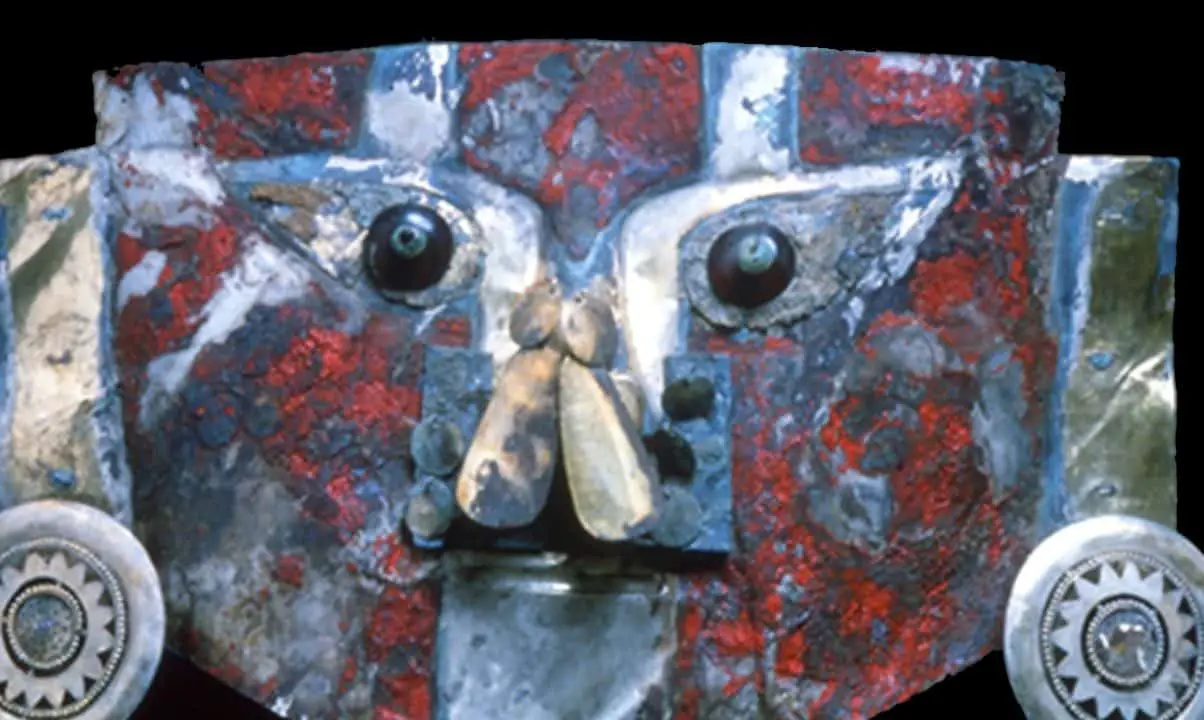A gold mask from the Sicán culture has been found to contain traces of human blood.
The Sicán (also called the Lambayeque culture), inhabited what is now the north coast of Peru between AD 750 and 1375. During the Middle Sicán Period (AD 900–1100), metallurgists produced ornate golden objects such as cups, jewellery, and funerary masks, many of which were buried in tombs of the ruling elite class.
During the 1990’s, archaeologists excavated the tomb of one such elite which housed an up-side-down seated skeleton painted bright red with cinnabar, as was a gold mask covering his detached skill.
The skeletons of two young women were also arranged nearby in birthing and midwifing poses, and two crouching children’s skeletons were placed at a higher level.
In a new study published in the Journal of Proteome Research, researchers have now analysed a small sample of the paint from the mask using transform-infrared spectroscopy, and also used a proteomic analysis using tandem mass spectrometry, revealing that the paint contained six proteins from human blood, including serum albumin and immunoglobulin G (a type of human serum antibody).
Other proteins, such as ovalbumin, came from egg whites. Because the proteins were highly degraded, the researchers couldn’t identify the exact species of bird’s egg used to make the paint, but a likely candidate is the Muscovy duck.
Researchers believe that the identification of human blood proteins suggests that the arrangements of skeletons was related to the “rebirth” of the deceased, with the “blood paint” potentially symbolising the “life force”. Find out more
Header Image Credit : Adapted from Journal of Proteome Research 2021





